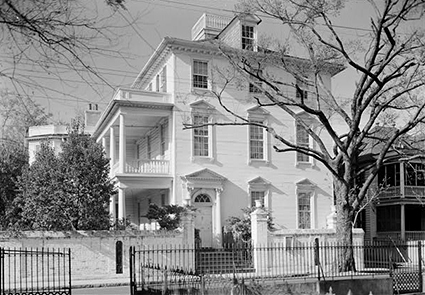25 Sept. 1718–21 Mar. 1779
John Stuart, Indian agent, was born in Iverness, Scotland. He went to sea as a young man and then sailed for America in 1748. Like other Scots of the same period, Stuart sought economic opportunity in the bustling mercantile world of Charleston, S.C. Although his first business failed in 1755, he had acquired a place for himself as a member of city society, for there he had married a young lady, Sarah, whose surname is unknown, and had been accepted for membership in the St. Andrew's Society, the Charleston Library Society, the Charleston Masonic Lodge, and the South Carolina militia. By 1757 he held the rank of captain in the militia.
At the outbreak of war with France in 1755, Captain John Stuart volunteered his services to the royal governor, who posted him to Fort Loudoun, a British outpost in the Cherokee country. While serving this frontier duty, Stuart became friends with a number of Cherokee, including the important tribal leader Little Carpenter. The friendship was instrumental in saving Stuart's life in 1760. Angered by the land and trade policy of South Carolina and urged on by the French, the Anglophobe Cherokee besieged Fort Loudoun in the spring of 1760, forced its capitulation, and then fell on the garrison as it withdrew. Stuart managed to use his experience in forest diplomacy to persuade his captor that he should be taken to Little Carpenter, who Stuart knew would protect him. Two years later Stuart's experiences in the Indian country proved even more beneficial when he was appointed British superintendent for the southern Indians. From 1762 until his death, John Stuart had the responsibility of implementing official British diplomacy with all the Indian tribes living south of the Ohio River and east of the Mississippi River. Principally he was to cooperate with the governors in establishing boundaries and purchasing lands and to attempt some control of the still lucrative Indian trade. In time of war with foreign enemies, he was to engage warriors as auxiliaries to royal troops. In the decades after the French and Indian War, all of Superintendent Stuart's time was consumed by the forest diplomacy necessary to achieve these ends.

At the outbreak of the American Revolution, the pressures on Stuart and the duties demanded of him greatly increased. He was of course gratified by support given to his efforts by such royal officials as Governor Josiah Martin of North Carolina. Early in the war he was accused of encouraging the Native Americans to attack the frontiers and kill those who were unfaithful to the king. Stuart did not expressly order the forest soldiers to attack the western settlements, but his sending of thirty pack horses of ammunition into the Cherokee country in the spring of 1776 cannot be called a wise move in light of the volatile situation among the Cherokee along the borders of Virginia, North Carolina, South Carolina, and Georgia. Officially it was his policy to restrain the Indian warriors until royal troops could be brought to act with them. Forced to flee from Charleston to St. Augustine and thence to Pensacola, Stuart soon found that his prewar openhandedness was staggeringly costly in time of war. Natives from all over the South came to visit him with the expectation of receiving hospitality and presents. His bills grew so enormous that they were singled out by the opposition in Parliament; shortly before his death there were even those in England who believed that Stuart and his deputies were drawing out enormous sums in advance and profiting, but the evidence does not support those accusations.
Another reason for the criticism aimed at him was his failure to deliver Indian auxiliaries when British troops arrived on the seacoast. Although he conferred with General Henry Clinton off Cape Fear in the spring of 1776, the superintendent made no commitments. When the Cherokee attacked the Carolinas, Virginia, and Georgia in 1776, Stuart really had little to do with either the beginning or the ending of the war. Late in 1776 and early in 1777 he tried to persuade the Cherokee to keep fighting and the Creeks to join them, but both refused to risk another invasion similar to that launched from North Carolina, South Carolina, and Virginia against the Cherokee in 1776. After the success of the Patriots in the Cherokee war of 1776, Stuart would have little luck in persuading forest soldiers to attack the Americans. His diplomacy had to be satisfied with the less dramatic objective of keeping the Indians from being swung over to the American side and thus exposing the British frontier in the Floridas. To the end of his life Stuart remained convinced that his native friends would support royal military actions under the proper circumstances, but the superintendent died without the proper circumstances ever being realized. He was buried in Pensacola, Fla. He and his wife had four children: Sarah Christiana, Christiana, a daughter who died in infancy, and John Joseph.